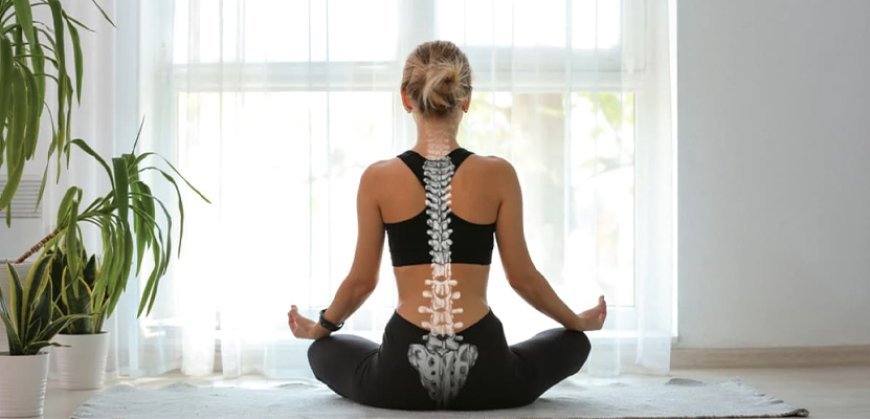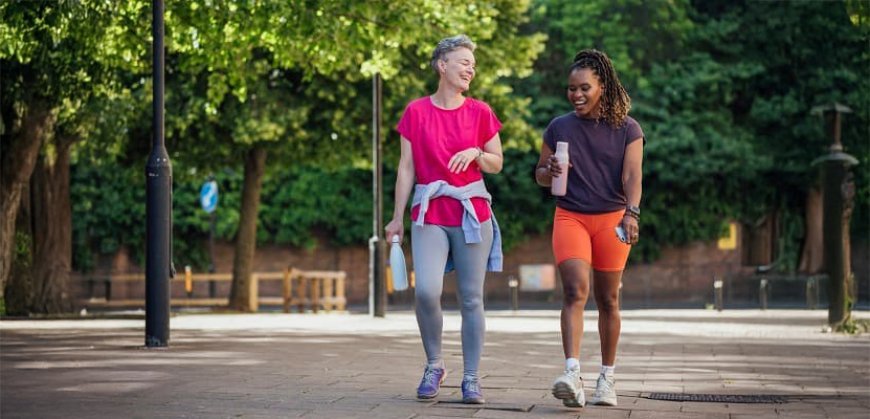Health Benefits of the Japanese Walking Technique
What if 30 minutes of walking could transform the heart, posture, fat loss, and mind? Discover the secret of the Japanese walking technique.

A daily walk can lift the spirit, a pause in a busy day. Yet, with the Japanese walking technique, each step becomes a deliberate act of care for the body and mind. Brisk strides alternate with gentle pacing, posture rises, breath deepens, and movement flows into vitality. Circulation hums, lungs expand, energy steadies, and the mind finds calm. Take a closer look. Just thirty minutes can transform more than a day; it can transform a life.
Benefits of Interval Walking Over Steady Walking
Start brisk at 70%, slow to 40% for recovery, cardiovascular load controlled. Men: −10 systolic, women: −5. Repeat cycles, heart strengthens, blood pressure falls, rhythm stabilizes, pattern reinforces itself. Each interval is part of a continuous loop of measurable improvement. When compared to steady-pace walking, an interval walking approach enhances circulation, increases lung capacity, and reduces LDL cholesterol more efficiently. A thirty-minute session of this routine demonstrates physiological improvements that steady walking often fails to achieve.
Build Functional Strength for Daily Life
Fast strides awaken the legs, the thighs, hips, and calves come alive. The gentle recovery keeps the rhythm flowing, muscles alert but never exhausted. Strength grows not in bulk but in function. A tall spine, relaxed shoulders, and a braced core bring the body together; balance follows, stamina blooms, and ordinary tasks, stairs, groceries, transform into effortless motion.
Interval Walking for Smarter Fat Loss
Interval structure forces metabolic shifts. Brisk efforts use glycogen stores. Slow phases stimulate fat-burning pathways. This constant demand prevents the body from settling into a plateau. Calorie burn increases both during and after the session. Weight control becomes more efficient without adding hours of walking.
Improve Posture and Relieve Back Pain
Why maintain a tall, aligned stance while walking? To strengthen postural muscles. How does it affect the neck and lower back? By reducing strain. What changes over time? The body adapts to a natural posture. How does this influence slouching? It diminishes gradually. What about desk-related aches? They lessen with regular practice.

And what is the overall effect? Each walking session becomes a gentle corrective for modern sitting habits, promoting long-term spinal health, comfort, and improved muscular endurance.
Improve Mental Clarity and Reduce Stress
Why alternate fast and slow steps while controlling your breath? To produce a calming effect. Why does mood improve? Because cortisol levels drop and endorphins rise. Why does mental clarity return? Because the practice serves as a moving reset. Why does stress decrease without long meditation? Because energy levels grow, daily tasks become easier, and resilience strengthens with every session.
Improve Circulation and Oxygen Flow
With each shift of pace and each purposeful swing of the arms, blood moves more freely, reaching both the farthest limbs and the body’s vital core. Oxygen flows into muscle and mind, lifting fatigue and speeding recovery. Immune cells journey with ease, fortifying resilience. Each calm, measured breath carries air deep into the lungs and washes peace over the nervous system.
Improve Posture and Breathing in Just 30 Minutes
Five minutes of warming up begin the session. Three minutes brisk followed by three minutes slow form the repeating pattern, carrying the practice to about thirty minutes in length. A cool down brings it to a close.The central focus throughout is posture and breathing. Adaptable to different fitness levels, the routine allows shorter intervals for novices and longer intervals for those already well trained.
Improve Blood Sugar Control
With each shift of pace, the body responds. Insulin works more smoothly, sugar in the blood finds balance, and energy flows without spikes or crashes. The rhythm of brisk and gentle steps strengthens metabolism and protects against the burdens of modern living. Studies show that consistent interval walking can reduce HbA1c levels and improve long-term glycemic control in people with type 2 diabetes.
Protect Your Body as You Age with Regular Activity
Does regular practice help with aging? Yes, it slows the natural drop in stamina and strength. What if you don’t do it perfectly? Even partial adherence helps. Why is it important? Studies show consistent activity supports cardiovascular health and bone density. What’s the result? You move better, stay independent longer, and reap the benefits of small daily efforts over time.
Build Fitness with a Simple Walking Pattern
It starts with an easy warm-up of five minutes. Then the pattern sets in: three minutes brisk, three minutes slow. The cycle repeats until thirty minutes have gone by. The session ends with a cooling phase that eases the body back.

Posture and breathing remain the guideposts throughout. A beginner might keep intervals short, while someone more trained extends them for a greater challenge.
Safe and Gradual Progression
Progress works best when it’s gradual. Short, brisk intervals that grow longer over time keep the effort safe and sustainable. If you have any heart condition or major health concern, a doctor’s advice is the smartest first step. Listen to your heart rate or your own sense of effort to hold the right 70/40 intensity.
Small Daily Steps for Big Health Benefits
Small, consistent adjustments in movement produce large outcomes. The Japanese walking technique transforms ordinary ambulation into a targeted health practice. Heart health improves. Muscles gain functional strength. Posture corrects. Metabolism and blood sugar management strengthen. Mental clarity and energy rise. The method asks for attention rather than sacrifice.
Conclusion
Give any habit thirty days and results start to show. You stand taller, your energy feels smoother, and your mood becomes more relaxed. Keep going and the bigger gains arrive, with stronger heart health, easier movement, and steady vitality every day.
FAQs
What is the Japanese walking technique?
The Japanese walking technique is an interval-based walking method that alternates brisk walking at about 70% effort with slower recovery walking at around 40%. It emphasizes upright posture, core engagement, and controlled breathing to maximize physical and mental health benefits.
How long should a Japanese walking technique session last?
A typical Japanese walking technique session lasts about 30 minutes, including alternating intervals of brisk and slow walking, along with a brief warm-up and cool-down. Even short daily sessions provide measurable health improvements.
What are the main health benefits of the Japanese walking technique?
The Japanese walking technique supports cardiovascular health, builds leg and core strength, improves posture, boosts metabolism and fat loss, regulates blood sugar, enhances circulation, reduces stress, and increases overall energy levels.
Is the Japanese walking technique suitable for beginners or older adults?
Yes. The Japanese walking technique is low-impact, making it safe for all ages. Interval intensity can be adjusted for beginners, while more advanced walkers can extend brisk intervals to challenge fitness levels.
Can the Japanese walking technique help with weight loss?
Yes. The Japanese walking technique increases calorie burn and accelerates fat metabolism. By combining brisk bursts with recovery periods, it helps break weight-loss plateaus and supports sustainable fat loss.

 Admin
Admin